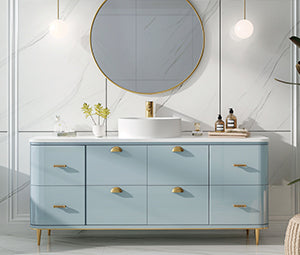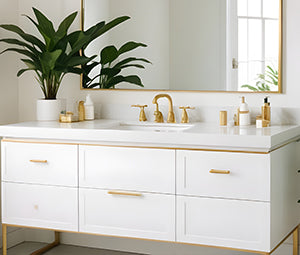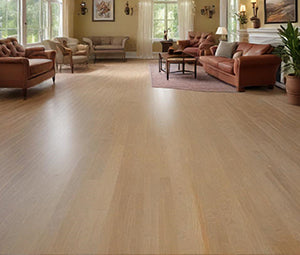How To Choose The Best Bathtub: Things You Need to Consider
If you are looking to update or improve the design of your bathroom, few pieces make a bigger impact than the bathtub. Being the largest fixture, the bathtub can be the centerpiece of your bathroom, making a definitive statement on the design and theme of the entire room.
The tub can be subdued, blending in with the rest of the fixtures to create a single, cohesive look. Selecting the perfect bathtub can take a good deal of preparation and research, which should include where the water source is located, the exact space available (in order to determine the width and length of the tub you will choose) and of course design. Our guide can help you, and give you the tools so you can choose the perfect bathtub for your bathroom.
How To Choose The Perfect Bathtub

The first step you should take is to identify where you want to place the tub in the room, and then measure the width and depth. This will identify the properly sized tub for your room.
The style of tub you choose is a matter of personal preference. Here are some of the most popular and well-known styles of bathtubs.
Freestanding:
Freestanding tubs have become popular in recent years and are a great choice for many bathrooms. These stand-alone tubs are easy to install and offer flexibility in terms of placement.
Clawfoot:
A clawfoot tub is a freestanding bathtub with those iconic “claws” or legs for support. This Victorian-era style tub is excellent for traditionally themed bathrooms.
Alcove:
Alcove tubs need three connecting walls for installation and only feature one finished side. An alcove is a common tub for apartments or homes with smaller bathrooms. Tub-shower combinations are common with alcove tubs and save plenty of space.
Drop-In/Undermount:
Drop-in tubs are bathtubs that are dropped into a carved out area then sealed in, making the rims visible. Undermount tubs are installed underneath the surrounding deck or ingress, hiding the rim.
Tub Composition and Weight
When you want to choose the perfect bathtub, the composition of the tub is an important consideration. Comfort and durability are often of the utmost importance when choosing a bathtub. Take the time to touch and feel all the different materials and in order to determine which one would be most comfortable for you. The tub composition also affects the weight of the tub. Determine the maximum weight your floors can safely bear before making your decision, especially if the bath is above the ground floor level.
Fiberglass: Fiberglass is lightweight, durable, and easily repaired.
Acrylic: Similar in weight to fiberglass, resistant to chipping, heavy impacts, and available in many colors and styles.
Porcelain: Typically made from a cast iron or steel base. Porcelain has a luxurious look and feel and will retain a glossy finish for years to come.
Cast iron: Enameled cast iron is a strong, very durable material with excellent heat retention.
Bathtub Features
Many bathtub manufacturers offer an array of options to make the bathing experience better. For example:
Jets and Bubbles: In-line heaters, foot massage jets, bubble jets, and many more of these features can turn a simple bath into a full spa experience.
Chromatherapy: Create a soothing, peaceful atmosphere with underwater lights that can change to suit your mood.
Speakers: Built-in, waterproof speakers can send vibrations through the water. You could also synchronize the speakers in order to enjoy your own customized playlists.
Heated Surfaces: In addition to the water itself, the surface and basin of a tub are heated to provide comfort and warmth to the legs and back.








